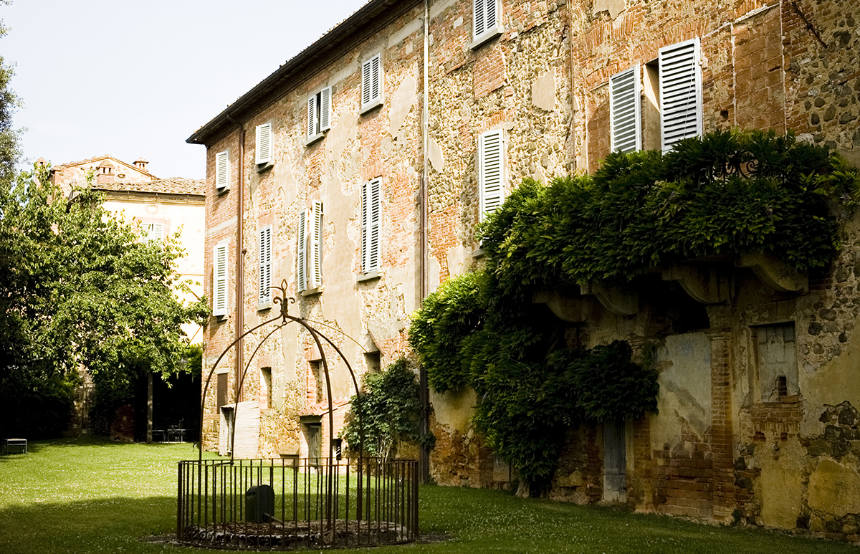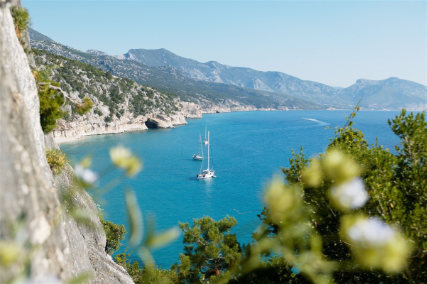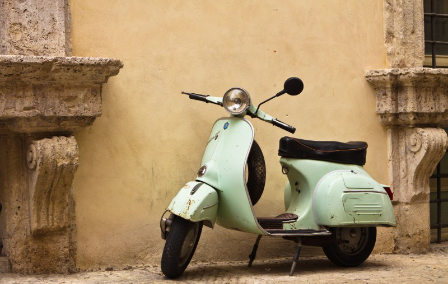Published 11th Apr. 2022
Reading time
No one does food quite like the Italians. Despite being replicated all over the world, it's only down the quaint cobblestone alleyways off Milan’s bustling arterial streets or up hilly Sicilian villages overlooking the glistening Mediterranean that’ll you find truly authentic Italian fare. For Italians, food is very much seen as a way of life. Family recipes are passed down from generation to generation and each region boasts its own unique delicacies that the locals take immense pride in. From familiar favourites such as pasta, pizza and risotto to the more obscure seadas – which the Sicilians probably kept to themselves for good reason – traditional food in Italy is a smorgasbord of hearty flavours (often topped with a sprinkling of nutty pecorino) that never disappoints.
It would be criminal to write a blog on traditional food in Italy and not begin it with pasta, especially spaghetti, or ‘Ragu alla Bolognese’ – if you want to get technical about it. While we can’t do the national dish justice in just one paragraph, its popularity around the world really speaks for itself. Prepared through a process of sweating, sautéing and braising minced meat, onions, carrots and pancetta, it is traditionally served with tagliatelle (Bologna traditionalists abhor the use of spaghetti) yet, contrary to popular belief, is actually believed to have originated in Imola – just 31.5 miles southeast of Bologna. Nevertheless, despite its contested roots, the impenetrable traditions and mouth-watering flavours that come with a ragu have secured it as one of Italy’s most beloved and celebrated dishes.
‘When a moon hits your eye like a big pizza pie, That's amore.’ Here’s to hoping that you don’t get hit in the eye by a pizza, but Dean Martin was right when he said pizza is amore. It may have been on the scene since the Roman Empire, but it was the Italians who put it firmly on the map, in Naples to be precise. After centuries of experimenting, and following a royal visit from the Queen Margherita herself, they settled on the trusty Neapolitan and Margherita pizzas we know today. While New York and Chicago have put their own twist on these doughy delights in subsequent years, it is Naples that remains pizza’s first true love. Complete with a tomato base topped with fresh mozzarella, basil and a drizzle of olive oil, there is nothing that even comes close to an authentic Neapolitan pizza.
Holy cannoli. The ultimate guilty pleasure, this Sicilian staple has transcended generations and cultures. Believed to have been passed down from Muslim women to the Christian nuns of Caltanisetta (during the fall of Arab ruling over the country in the tenth century), they were reportedly the first to introduce sugar to Sicilian people. And they haven’t looked back since. Dubbed the ‘Sweet Tooth Kingdom’ of Italy, the region has now become synonymous with the crunchy, tube-shaped pastry shell that comes packed full of creamy ricotta, candied fruit and chocolate. Plus, we can’t think of a better way to start a Sicilian holiday than by sipping on a caffè, cannoli in hand, on a quaint terrace overlooking the Mediterranean.
What seems to be a common theme with traditional food in Italy is its simplicity. Seadas are no exception. Hailing from the humble pastoral areas of Sardinia, they comprise of only five ingredients – semolina flour, lard, Pecorino cheese, lemon and honey – yet, once cooked, become a deep-fried dumpling of deliciousness. Traditionally served with a light drizzle of honey, which complements their oozing lemon-scented cheese centre perfectly, they are surprisingly difficult to replicate outside Sardinia. That’s why we have put them right at the top of our Sardinian to-do list, right next to salubrious soaks in the turquoise waters of the Costa Smeralda – of course.
Rice may have been another gift from the Arabs, but it was in Milan where this mighty seed met its risotto destiny. Continuing the slow-cooking principles popular in the 19th century, rice went from being simply boiled to being sautéed with knobs of butter and light flavourful broths. Throw in a little beef marrow, a dash of saffron and nutmeg and you have yourself the ‘Risotto Alla Milanese’ Felice Luraschi created in his Milan kitchen in 1829. Easily recognisable by its distinct yellow colouring, tracking it down in Milan is no arduous task. Head to The Trattoria di Milano, just off the Piazzale Ferdinando Martini, for the award-winning risotto and a few scoops of mascarpone cream if you’ve got the room. One thing is for sure though, when it comes to traditional food in Italy, you can always count on the Italians to make it a stylish and piquant affair.

Italy is a holiday hotspot (for good reason), so our help in navigating the crowds is invaluable. From snapping up hard-to-come-by Vatican tickets (at the quietest times of day) to organising an archaeologist to guide you around Pompeii, our consultants have the insider intel to make your trip unforgettable. Stuck on where to stay? Our vetted accommodation options range from family-run ‘trullis’ in Puglia to big-name hotels in Venice. So, whether you're an adventurous family or a couple on a romantic retreat, we can find the version of Italy to suit you.
ENQUIRE NOWPractical advice and inspiration for your next trip

On a research trip to Umbria and Tuscany, our Europe specialist, Valeria, discovered that the best way to explore the Italian countryside is by car. During her road trip, she marvelled at Marmore Falls, admired the beautiful views over Lake Trasimeno and wandered through the UNESCO-listed village of Castiglione d'Orcia. From cooking classes to wine tastings, her trip was jam-packed with Italian delights.
14th October 2025 - Italy Travel Tips

With its iconic landmarks, stunning scenery and famously delicious cuisine, Italy has long ranked as one of our all-time favourite destinations. This Mediterranean marvel is often thought of as a summer spot, but plan your trip to Italy in May and you’ll be rewarded with warm weather, fewer crowds, springtime festivals and scrumptious seasonal food. Have we piqued your interest? Read on for our top five reasons to visit Italy in May… For the weather For fewer crowds For springtime festivities For outdoor activities For the food For the weather Italy,
18th August 2025 - Italy Travel Inspiration

Dodge the summer surge and enjoy a holiday to Italy in September. Scale the dramatic Dolomites in the refreshing autumn air, raise your glass in the Tuscan hills during grape harvest season or immerse yourself in Venice’s flamboyant festivities. If it’s thinning crowds you’re after, head south to Puglia’s charming coastal towns, or for sun-drenched sandy beaches, Sicily has your name written all over it.
16th June 2025 - Italy Travel Inspiration

Our team of destination experts will get to know you and your unique requirements for your holiday

We work with you to build an ultra-personalised holiday itinerary with your choice of accommodation, experiences and activities

All of our holidays include little extras designed to make a big difference to your trip, from fast-tracking you through airport check-in and security to our network of local Concierges